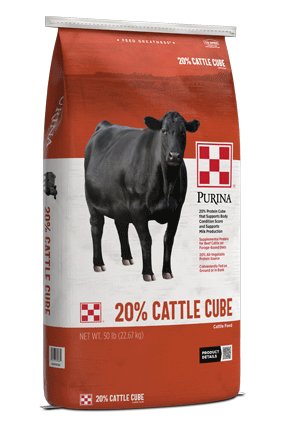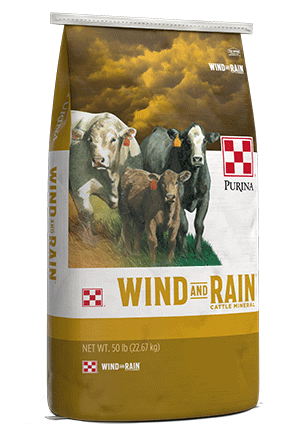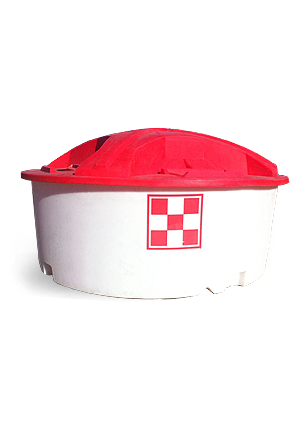
Don’t Roll the Dice with Calving
Management : Cow & Calf

We all know how critical a successful calving season is, and that’s why we shouldn’t roll the dice. We should go into calving season prepared and with a solid plan in place.
Here are some of the Purina experts’ best calving tips:
Make sure you have these 12 calving season essentials on hand. Check and take inventory of the following calving supplies:
Identify how often you’ll check cows for calving, and don’t forget to have a plan to check calves.
A newborn calf doesn’t have significant energy reserves, so if it becomes sick it’s condition can deteriorate rapidly. Check on newborn calves daily to identify signs of sickness early, and treat affected calves quickly. Continue monitoring newborn calves once they are a day or two old. A problem can develop quickly.
At the Purina Animal Nutrition Center, struggling calves have their temperatures checked. Calves with an internal temperature below 101 degrees Fahrenheit will be brought indoors, warmed up in a calf warmer and fed colostrum replacer (LAND O LAKES® Bovine IgG Colostrum Replacement).
If the calf seems to be doing well, it is often moved back outdoors. If the calf is still struggling, it will stay indoors longer and may receive another round of colostrum replacer.
You should also have a plan to treat dehydration commonly caused by scours. Scouring calves lose a large volume of fluids and need a quality oral electrolyte solution, like LAND O LAKES® Electrolyte System. If scouring calves aren’t noticed until they are very ill – to the point where they don’t have a suckle reflex – contact your veterinarian to administer intravenous fluids.
Like this information? Sign up to receive our monthly management tips. Or, get a jump-start on spring by learning how to avoid the spring nutrient gap.
Here are some of the Purina experts’ best calving tips:
Take inventory of calving supplies
Take inventory of calving supplies at least a month before the expected start of calving season. Go through supplies and make sure items like calving chains or straps and calf pullers are in working condition. No one wants to be in the situation where they need their calf puller and it fails them. Replace any items necessary.Make sure you have these 12 calving season essentials on hand. Check and take inventory of the following calving supplies:
- Palpation gloves and disinfectant
- Ear tag applicators and ear tags
- Banders and bands; consider buying new bands each year because they tend to dry out and crack over time
- Navel spray or dip
- Check that your scale is functioning
- Check your thermometer
- Have a method to record information
Develop a plan for cow and newborn calf checks
Consider your facilities before calving begins. If possible, calve cows in a pasture close to working facilities. It’s much easier to assist a cow calving if she can be easily moved to a chute and restrained. It also makes it easier for bringing struggling calves inside.Identify how often you’ll check cows for calving, and don’t forget to have a plan to check calves.
A newborn calf doesn’t have significant energy reserves, so if it becomes sick it’s condition can deteriorate rapidly. Check on newborn calves daily to identify signs of sickness early, and treat affected calves quickly. Continue monitoring newborn calves once they are a day or two old. A problem can develop quickly.
Have a protocol for problem calves
A few calves are bound to get sick, despite best efforts. Have a protocol in place for when newborn calves are struggling.At the Purina Animal Nutrition Center, struggling calves have their temperatures checked. Calves with an internal temperature below 101 degrees Fahrenheit will be brought indoors, warmed up in a calf warmer and fed colostrum replacer (LAND O LAKES® Bovine IgG Colostrum Replacement).
If the calf seems to be doing well, it is often moved back outdoors. If the calf is still struggling, it will stay indoors longer and may receive another round of colostrum replacer.
You should also have a plan to treat dehydration commonly caused by scours. Scouring calves lose a large volume of fluids and need a quality oral electrolyte solution, like LAND O LAKES® Electrolyte System. If scouring calves aren’t noticed until they are very ill – to the point where they don’t have a suckle reflex – contact your veterinarian to administer intravenous fluids.
Other areas of focus
Here are a few additional tips for the season:- A year-round body condition score (BCS) between 5 and 5.5 and building up to a BCS 6 by the time of calving is ideal. Cow nutrition and BCS impact fetal programming. A cow passes performance genes along to her growing fetus, but nutrition and BCS impact if those genes are turned on or off. A good BCS can also ensure stamina for a cow or heifer during calving, contribute to quality colostrum, help with calf vigor and influence the cow or heifer breeding back.
- Train whoever is checking your cows or calves. Personnel should be able to identify a cow or heifer having problems. If a cow is having calving difficulties and no progress has been made in 20 minutes, call your veterinarian. Personnel should also be trained to determine whether the cow has nursed the calf – a suckling calf is a sign that things are going well.
- Upon delivery of a live calf, insert an ear tag for identification. Match and record the calf’s identification number to the cow’s number. Immediately applying an ear tag makes it easy to identify newborn calves if they become sick early on. Identification will help ensure the right calf receives treatment.
- At the time of tagging, dip the navel with iodine to help it dry out and prevent bacteria from spreading to the calf through the umbilical cord.
Like this information? Sign up to receive our monthly management tips. Or, get a jump-start on spring by learning how to avoid the spring nutrient gap.



